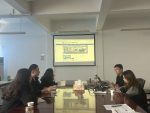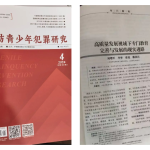Building upon the profound symbolism of birds in mythology and modern culture, which highlights their roles as carriers of spiritual and societal meanings, we now explore how this symbolic heritage catalyzes tangible human innovations. Recognizing birds as both mythological symbols and biological marvels offers a bridge from ancient narratives to cutting-edge technology, art, and problem-solving strategies. This connection underscores the enduring influence of avian symbolism in shaping practical advancements and creative pursuits across diverse fields.
- The Biological Marvels of Birds as Inspiration for Human Innovation
- Birds as Catalysts for Artistic and Design Innovation
- The Role of Bird Behavior in Developing Creative Problem-Solving Strategies
- Birds in Technology and Robotics: Mimicking Nature for Future Frontiers
- Cultural Narratives and Modern Mythmaking: Reinventing Birds as Symbols of Human Creativity
- Returning to Roots: Bridging Innovation Back to the Symbolism in Mythology and Culture
The Biological Marvels of Birds as Inspiration for Human Innovation
Birds have fascinated scientists and engineers alike due to their extraordinary abilities, particularly their mastery of flight. The mechanics of bird flight—such as wing shape, feather structure, and muscle coordination—have profoundly influenced aeronautical engineering. For example, the study of bird wing aerodynamics led to the development of more efficient airplane wings, optimizing lift and reducing drag. Researchers like Janine Benyus in biomimicry emphasize how observing bird physiology can inspire sustainable technological solutions.
A notable case is the development of drones designed to mimic bird flight. These "ornithopter" drones incorporate flapping wing mechanisms inspired by the biomechanics of birds, enabling silent and energy-efficient flight. Such innovations are being used in environmental monitoring, wildlife research, and surveillance, demonstrating how biological insights can lead to practical technological applications.
| Inspiration Source | Technological Outcome |
|---|---|
| Bird Wing Morphology | Aerodynamic Wing Designs for Aircraft |
| Feather Microstructure | Water-Repellent and Self-Cleaning Surfaces |
| Flocking Behavior | Swarm Robotics and Distributed Algorithms |
Birds as Catalysts for Artistic and Design Innovation
Throughout history, artists have drawn inspiration from the elegant forms and dynamic behaviors of birds. From the intricate plumage patterns in Renaissance tapestries to the stylized depictions in Asian art, bird motifs have symbolized freedom, transcendence, and spiritual elevation. Modern designers incorporate bird shapes and flight motifs into architecture, fashion, and product design, reflecting a desire to evoke movement and vitality.
For instance, the use of feather-inspired textures in fashion creates tactile richness and visual interest, while architecture often employs bird-inspired curves to promote harmony with nature. Contemporary artists also leverage bird symbolism to evoke emotional responses; for example, the works of Ai Weiwei incorporate bird motifs to comment on freedom and societal constraints. Such artistic endeavors continue to expand the symbolic language inspired by avian forms, fostering innovative expressions that resonate across cultures.
Key Artistic Examples
- Henri Matisse: Use of bird motifs to symbolize liberation and joy in his cut-outs.
- Japanese Kites: Ornate designs inspired by bird plumage and flight patterns.
- Modern Graphic Design: Incorporation of abstract bird shapes to evoke movement and freedom.
The Role of Bird Behavior in Developing Creative Problem-Solving Strategies
Bird behavior offers profound lessons in cooperation, navigation, and resilience—lessons that can be translated into human innovation. Flocking and collective movement, for instance, serve as models for collaborative innovation. Observations of starling murmurations reveal how simple rules followed by individual birds lead to complex, coordinated patterns—an inspiration for swarm intelligence algorithms used in robotics and AI systems.
Similarly, migratory patterns demonstrate advanced navigation skills. Studies of birds like the Arctic tern, which migrates thousands of miles annually, inform the development of sophisticated algorithms for autonomous vehicles and GPS-based navigation systems. Understanding how birds adapt to changing environments inspires resilient strategies for human systems, fostering innovation in sustainability and disaster response.
In essence, bird behavior exemplifies adaptive strategies that can be mimicked to solve complex human challenges, encouraging a mindset rooted in resilience, collaboration, and ingenuity.
Birds in Technology and Robotics: Mimicking Nature for Future Frontiers
Advances in robotics have led to the creation of robotic birds designed for environmental monitoring, surveillance, and delivery tasks. These biomimetic robots replicate the flight dynamics of real birds, utilizing lightweight materials and flapping wing mechanisms. Companies like Festo have developed robotic birds such as the "BionicSwift," which mimics the flight and agility of real swallows, opening new possibilities in autonomous flight technology.
In artificial intelligence, flocking algorithms inspired by bird behavior optimize the coordination of drone swarms, enabling efficient search-and-rescue missions, agricultural monitoring, and real-time environmental data collection. These algorithms simulate the simple yet effective rules that birds follow during migration or flocking, leading to robust and scalable AI systems.
"Nature's designs, especially those of birds, serve as a blueprint for technological innovation, bridging biology and engineering in ways that continually expand our frontiers."
However, these advancements also raise ethical considerations regarding the use of bio-inspired robotics and AI—particularly concerning privacy, ecological impact, and the potential for misuse. As we continue to develop bird-inspired technologies, it is vital to balance innovation with responsibility, ensuring that these powerful tools serve societal progress and ecological sustainability.
Cultural Narratives and Modern Mythmaking: Reinventing Birds as Symbols of Human Creativity
Contemporary media and storytelling continue to reframe birds as symbols of innovation and societal progress. Films like Pixar's "Up" depict birds as agents of adventure and change, while literature often uses avian motifs to symbolize hope and transcendence. These narratives reinforce the symbolic connection between birds and human potential, inspiring new generations of thinkers and creators.
Furthermore, modern mythmaking around birds emphasizes their role as messengers of change—embodying qualities such as resilience, adaptability, and freedom. This reinterpretation fosters a cultural environment where innovation is seen as a natural extension of the symbolic qualities attributed to birds. Such stories motivate young innovators and entrepreneurs to pursue groundbreaking ideas, viewing themselves as part of a continuum that links ancient symbolism with future possibilities.
Notable Cultural Examples
- Birds of Freedom: Symbols in protests and social movements advocating liberty and human rights.
- Bird-Inspired Logos: Brands like Twitter and Twitter bird iconography embody communication and connectivity.
- Art Installations: Public art projects that use bird motifs to promote environmental awareness and cultural renewal.
Returning to Roots: Bridging Innovation Back to the Symbolism in Mythology and Culture
As modern innovations deepen our understanding of bird biomechanics and behavior, they also enrich our appreciation of traditional symbolism. Recognizing that technological advances are, in essence, a form of modern mythmaking highlights the ongoing dialogue between ancient narratives and contemporary practices. This interconnectedness suggests that the symbolic power of birds continues to inspire, shaping not only our technological landscape but also our cultural identity.
Encouraging a future where symbolic bird motifs motivate scientific and artistic pursuits can foster a sustainable cycle of inspiration. Integrating traditional symbolism with practical innovation creates a rich tapestry where myth and science inform and elevate each other, ensuring that the symbolic significance of birds remains a vibrant part of human creativity.
"In every flapping wing and soaring flight, we find echoes of ancient stories—reminding us that innovation is rooted in the timeless human desire to transcend and evolve."
Ultimately, the enduring symbolism of birds in mythology and culture continues to serve as a wellspring of inspiration. By embracing both the mythic and biological dimensions of avian life, humanity can forge a future where innovation is not only practical but also deeply connected to our shared cultural heritage.


.png)


















